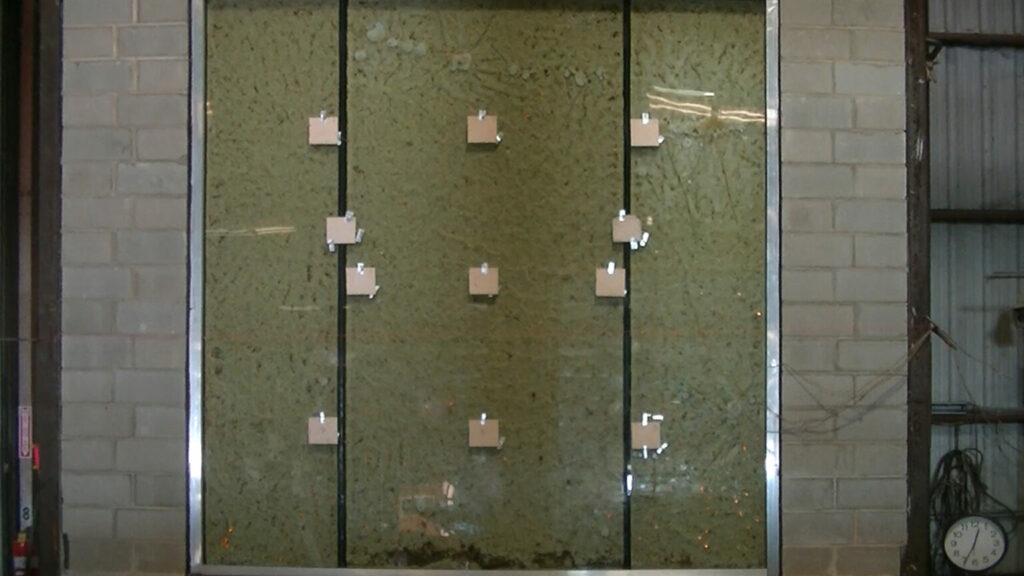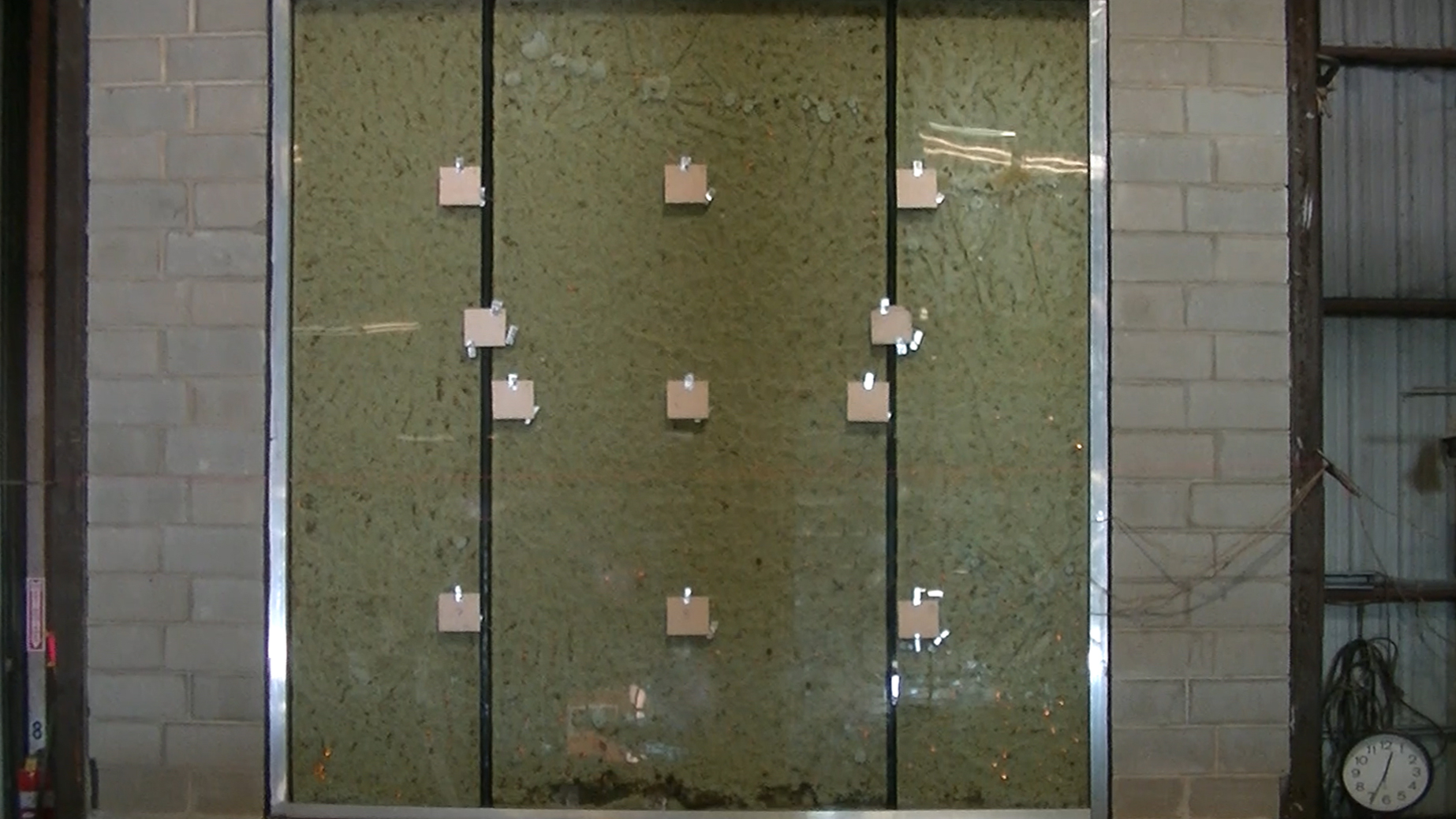Radiant Heat and Rated Glass: Everything You Should Know


Radiant heat is a double-edged sword: the warmth emanating from a fireplace or a radiator can feel cozy and calming on a particularly cold day, but exposure to high amounts of radiant heat coming from an uncontrolled fire can get lethal quickly.
Apart from the smoke and the fire itself, radiant heat can cause immense harm to people trapped in a structural fire. What makes matters worse is that you may still be affected by the heat even though you are well away from the fire, as the radiant heat can be absorbed by your body and cause severe burns and even death.
Designing your building to have provisions to compartmentalize smoke and flames and minimizing the transmission of radiant heat to safe levels can prevent injury and save countless lives while preventing the fire from spreading into the other areas of the building.
This article will explain what radiant heat is and its effects on people and property, then discuss ways to protect against it.
What is radiant heat?
What you feel as radiant heat are the photons traveling in invisible infrared waves that interact with your body’s molecules. One thing to understand here is that the photons do not make the air itself hot. Rather, the photons travel at the speed of light, come into contact with other objects, and react with their electrons. These electrons vibrate when exposed to photons, and you’ll feel this sensation as heat.
While materials like metals and concrete can absorb these infrared waves and thus block heat from transferring to the other materials on the other side of the wall, some materials — like glass — can still let infrared waves through. This means that heat can travel from one side of the glass to the other.
What are the dangers of radiant heat transfer?
When not mitigated, radiant heat can cause all sorts of problems to your body and your property. Radiant heat is typically expressed in terms of kilowatts per square meter (kW/m2). According to the NFPA 59A Standard, the level at which unbearable human pain occurs happens at around 5 kW/m2. People exposed to this amount of heat can experience second-degree burns, which can further complicate evacuation for emergency responders.
Moreover, when the radiant heat reaches around 7.5 kW/m2, materials like wood, fabrics, and paper can spontaneously combust without coming into contact with fire. In effect, radiant heat can easily spread the fire beyond its point of origin. Because of this, it is critical for architects to design structures with built-in provisions to block as much radiant heat as possible.
Materials like concrete and cement can block radiant heat and compartmentalize rooms to mitigate the spread of a fire. However, they are hardly aesthetically pleasing to look at, and they also block out natural light from illuminating the environment inside. When looking to strike a balance between safety and aesthetics, designers should look into fire-rated glass.
Fire-rated glass is a special type of architectural glass that is designed to compartmentalize smoke and flames in order to slow down the spread of the fire. However, not all types of fire-rated glass are created equal.
Some can only prevent fire and smoke from spreading elsewhere. Meanwhile, other types of fire-rated glass can effectively limit the transmission of radiant heat to the non-fire side while also preventing the spread of fire and smoke to other areas.
Not all fire-rated glass can block radiant heat
Fire-rated glass has two categories: fire-protective glass and fire-resistive glass. This next section will differentiate between the two types.
Fire-protective glass
Fire-protective glass is used to prevent the spread of fire and smoke to different areas of a building. They are tested to NFPA 252/257 or UL 9/UL 10C and are typically rated from 20 to 45 minutes. While they can protect people on the other side of the glass from lapping flames, fire-protective glass cannot block radiant heat from getting to the other side.
These are the most common types of fire-protective glazings:
-
Wired Glass
The oldest type of fire rated glass around. The embedded wires hold the glass in place during a fire test. While it may appear strong, wired glass is actually weak and breaks easily when impacted. This is why by code, wired glass is no longer allowed in doors, sidelites and other hazardous locations. Wired glass cannot limit radiant heat and allows as much as 35–38 kW/m2 of radiated heat to pass through to the non-fire side of the glass at 37 minutes.
-
Ceramics
This product was first introduced as an alternative to wired glass, but without much improvement. Ceramics are brittle, and break easily into large shards when impacted. This is why the code also doesn’t allow ceramics in doors, sidelites and other hazardous locations unless it is filmed or laminated to meet CPSC safety standards — adding to its already high cost. While ceramics may not have the embedded wires, it does have a noticeable amber tint. Ceramics cannot limit radiant heat and allows as much as 75 kW/m2 of radiated heat to pass through to the unexposed side at 60 minutes.
-
Specialty Tempered Glass
Clear, affordable and safe alternative to wired glass and ceramic. This product is typically used as vision panels in 20 minute doors. Like wired glass and ceramic, specialty tempered glass does not limit radiant heat. However, it doesn’t have embedded wires or amber tints, making it optically clear. It also meets CPSC safety standards without the need for films or laminates.
-
Specialty Fire Protective
A new type of fire protective glass used in 45 minute applications. It meets all fire, safety and hose stream tests without the need for wires, films or laminates. This product is proudly USA-made and available in low-iron versions at a fraction of the cost of expensive ceramics.
Fire-resistive glass
Apart from controlling the spread of fire and smoke, fire-resistive glass can also protect people on the non-fire side of the glass from radiant heat. This type of fire-rated glass is tested according to ASTM E119/UL 263, which means it can prevent ambient temperature from rising above 250°F on the non-fire side of the glass. Being able to limit the radiant heat transmission to safe levels allows building occupants to safely exit the building, or seek safe harbor and await rescue in case they cannot escape on their own.
There are two types of fire resistive glass: fire-resistive intumescent units and fire-resistive multilaminates.
-
Fire-resistive intumescent units
This type of fire-resistive glass is composed of tempered glass lites filled with a clear, semi-rigid intumescent interlayer or SRIIL. The semi-rigid intumescent layer swells and turns opaque when exposed to heat, thus blocking fire, smoke, and heat from passing through.
Our fire-resistive intumescent units are as follows:
- SuperLite II XL 60 / 90 / 120 – These USA-made products are rated up to 2 hours and meets ASTM E119/UL 263. They also limit temperature rise to 250°F degrees and reduce radiant heat flux to 0 kW/m2. They can be used up to the maximum size tested, and available in a low-iron version for even more transparency.
- SuperLite II XLB 60 and 120 – Also USA-made, these are the oversized version of the SuperLite II XL Series and can be used for butt glazing applications. SuperLite II-XLB 60 has the largest tested and listed sizes for 60 minute fire resistive glass at 10,000 sq. in., while SuperLite II-XLB 120 has the largest tested and listed sizes for 120 minute fire resistive glass at 7,980 sq. in.
-
Fire-resistive multilaminates
This type of fire-resistive glazing is made up of multiple sheets of annealed glass with layers of intumescent material. They are imported from overseas and are typically susceptible to damage of the interlayers from moisture, have smaller sizes, require great care in handling due to breakage or cracking at the edges (because it uses annealed glass), and have other restrictions that limit their use.
Fire resistive glass requires a specialty framing system capable of providing the same level of protection against fire, smoke and radiant heat. Since hollow metal framings cannot reach this standard, special fire resistive framing is designed to fill this gap. This type of framing can be used in wall and door assemblies (including sidelites and transoms) rated 60 minutes and above.
Read: Tips For Matching Fire Rated Glass to Framings
Key Takeaway
In a structural fire, you are fighting more than just the fire itself. You must not forget about the dangers of radiant heat stemming from the fire. Investing in quality fire-resistive glass can control the transmission of dangerous radiant heat. This step creates a more holistic approach towards mitigating the damage from a structural fire.
If you are looking for a supplier of fire-rated glass for your next project, check out our wide array of products at SAFTI FIRST. We are the industry leader in USA-made, fire-rated glass and framing products that can protect against radiant heat and keep structures safe without compromising style. Contact us today to learn how our fire-rated solutions can level up your projects.